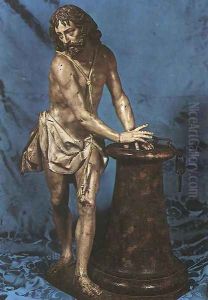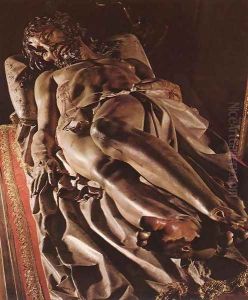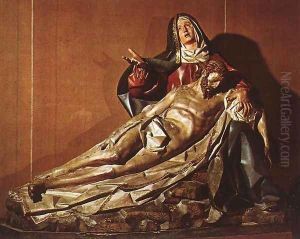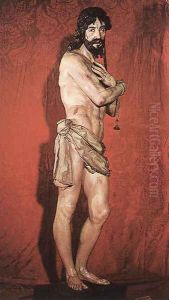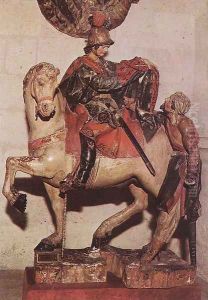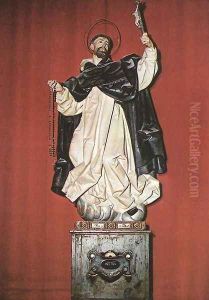Gregorio Fernandez Paintings
Gregorio Fernández was a prominent Spanish sculptor, born in 1576 in Sarria, in the province of Lugo, Galicia, Spain. His exact birth date is not known, but it is generally accepted to be around 1576. He spent the majority of his life in Valladolid and is considered one of the most significant sculptors of the Spanish Baroque, particularly renowned for his religious sculptures and his contribution to the Spanish school of sculpture.
Fernández moved to Valladolid in his early twenties, where he worked and trained under Juan de Juni, an accomplished sculptor of French origin, who was a significant influence on Fernández's early work. He eventually established his own workshop in Valladolid, which became one of the most important centers for Spanish sculpture during the 17th century.
His work is characterized by its dramatic realism, emotional intensity, and intricate detail. Fernández was a master at capturing the human form and the expression of intense religious fervor and suffering, which was a popular theme during the Counter-Reformation in Spain. His sculptures were primarily created for religious institutions and were integral to church altarpieces, processional figures, and other devotional objects.
One of his most famous works is the ‘Paso’ (a term for the sculptures carried in processions during Holy Week). These works were designed to move the faithful to piety and reflection during religious observances. He created figures that were so lifelike that they seemed to breathe, with details such as tears made of glass and wounds depicted with striking realism. His use of polychromy, a painting technique on sculptures, was particularly noted for its vibrancy and the sense of life it brought to his figures.
Gregorio Fernández’s influence extended beyond his lifetime, with his approach to sculpture impacting the broader Spanish Baroque movement and resonating in the works of later artists. He died in Valladolid in 1636 after a successful career that saw his works commissioned by religious institutions across Spain. His legacy is preserved in numerous churches and museums, with his sculptures continuing to be admired for their emotional power and technical mastery.
